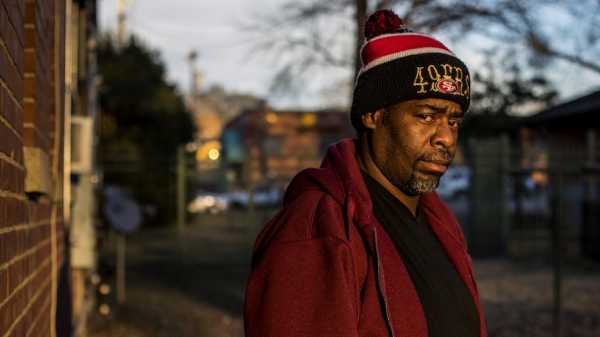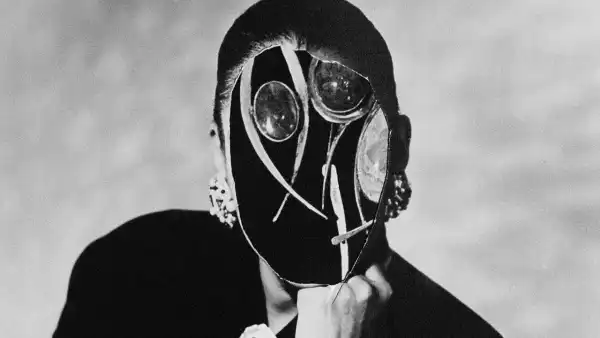
Nashville is booming, and so is its real estate, and so is its income inequality. In one of the city’s hottest neighborhoods, East Nashville, the James A. Cayce Homes, a sixty-three-acre tract of aging, run-down public housing, are about to be razed, redeveloped, renamed, and radically transformed—a six-hundred-million-dollar project for the supposed benefit of all. “The Promise: Life, Death and Change in the Projects,” a stellar six-part series from Nashville Public Radio reported and produced by the WPLN staff reporter Meribah Knight, reflects on the role of public housing in America by presenting the story of Cayce’s transformation, through the voices of its residents. The redevelopment project, Envision Cayce, sees a future in which people in subsidized housing and young professionals paying market rate will live harmoniously in new and improved residences. Knight calls it “a grand experiment to mix things up—and a bold promise that everyone will get something better.” But history hasn’t given Cayce residents reason to have much faith in the city’s housing authority or in bold promises.
In the first episode, we meet Vernell McHenry, sixty-one, who has lived in Cayce (pronounced “Casey”) for more than seventeen years; she’s daydreaming about a place far away. “The beaches, the sandy beach, the water is blue. . . . We got my palm trees sitting out there, and I’m sitting and sippin’ on a pineapple spritzer, with the little umbrella,” she says, laughing. “I do travel away from here in my mind.” McHenry likes to sit on a folding beach chair on her stoop, alternating between thinking about her imaginary waterfront home—“It is a old Victorian house. And it is purple”—and greeting her neighbors, many of whom are kids. (“Good evening, young man!” she says. “Hey, Tay!” “Did you have a good day in school?” “Hello, Marcel!”) This deep desire to be a part of the community and also to escape it—McHenry’s apartment is small and dimly lit, with linoleum floors, and her building is later condemned, after a sewage problem—is a contradiction at the heart of “The Promise.” Change is complex: McHenry is offered an apartment in the first new building, Barrett Manor, built entirely for subsidized tenants. It has a bit more space, bigger windows, central air, electronic key fobs. “I am like a child in a new candy store,” McHenry says, when she first tours the building. But some aspects of it unnerve her. There are security cameras everywhere—fifty-seven, inside and out—and new rules for residents. And there’s nowhere to sit outside and talk. By the end of the episode, McHenry doesn’t want to live in Barrett Manor at all.
If you’re unfamiliar with the history of public housing in the United States, “The Promise” is eye-opening. Starting with the Housing Act of 1937, which was passed as part of the New Deal, public housing was intended to improve the living conditions of poor people by getting them out of slums. Cayce, which opened in 1941, was one of Nashville’s first developments and is its largest. Today, more than thirteen hundred people live there, and ninety per cent of them are African-American—but the development was originally built for white families, and black residents weren’t allowed. (Projects for black families were across town.) In its early years, Cayce had baby clinics, nurseries, sports teams, libraries, social groups for seniors, groundskeeping jobs for residents. We hear patriotic music and an old newsreel, and a man’s voice bellowing, “Every dedication in the United States of a public low-rent housing project is a rededication of our democracy to the principle that all men are created equal!”
If only. Soon, Knight tells us, white families left for the suburbs, thanks to government-backed housing loans that were denied to black Americans. Because of urban renewal and highway construction, many of Nashville’s black residents lost their homes and their neighborhoods. In the sixties and seventies, public housing was for the poorest of the poor; in the eighties, federal funding for it was slashed; the nineties brought intensified problems with drugs and crime. Today, Cayce’s buildings are in disrepair; pests and mold are rampant, and asthma rates are high.
Violence is a problem, too. Dexter Turner, the podcast’s central character, who goes by the name Big Man, is a garrulous husband and father who grew up in a nearby housing project; he moved to Cayce in 1999 and has a warm relationship with his neighbors. But he’s increasingly stressed by Cayce’s chaos and violence. He says that he has adapted—“It’s like a cactus. You can throw me out in the sand and I am going to grow”—but, one day, as he’s getting ready for a family barbecue and Knight is recording him, there’s a fatal shooting right in front of his apartment. You can’t adapt to that. He wants a safe place to live with his family, and it isn’t clear that Envision Cayce will provide that.
Knight, a longtime print journalist, moved to Nashville fairly recently, after eight years in Chicago. She learned radio by working on WBEZ’s “Curious City,” in 2015, and got hired as a reporter at WPLN after moving to Nashville with her husband, a photojournalist. “The Promise” is her first podcast and one of WPLN’s most ambitious recent reporting endeavors. Knight, who is white, reported “The Promise” for a year, going to Cayce every day, she told me, and focussing not on crises but on day-to-day life. The series reflects that intimacy and trust. Each episode tells a compelling story on a different subject: a police shooting; getting out of the projects; the future. In one episode, she observes that if people of different income levels are going to live together, they need to start talking, and she orchestrates a meeting between Big Man and Wolfgang and Stephanie, a wealthy couple who live in a contemporary house across the street from Cayce.
“Crossing the street means going from an income of eight thousand dollars a year to ten times that,” Knight says. It also means going from mostly black to mostly white. Turner says that if you asked a neighbor in Cayce for a cup of sugar, he’d give it to you, but that if you asked a neighbor across the street, “there are going to be around eight polices, a SWAT team, and they’re going to tell you you was doing a burglary.” A clip of Wolfgang talking to Knight reveals that he is both idealistic and wincingly self-congratulatory: “We believe that in going into an area that people are forgotten about—and we choose to live there—we bring everybody up,” he says. But the visit goes well. Afterward, Knight says, “They didn’t solve all Cayce’s problems. But a guy named Big Man just walked up the street and met a guy named Wolfgang. And he left with a jar of trail mix—not in cuffs.” In the weeks that follow, Big Man and Wolfgang keep talking, and they even coördinate on a business idea. You worry that this encouraging story will end badly, and it does—but not in a way that anyone would have anticipated.
My chief complaint about “The Promise” is that there’s not enough of it—Envision Cayce is still in the early phases. But Knight hopes to do a second season, and last week Nashville Public Radio released a satisfying bonus episode that caught us up on McHenry, Turner, the aftermath of the Wolfgang experience, and Envision Cayce. We hear one resident crying with joy about her new apartment, and saying that she feels like Cinderella. But the regime comes with new rules for subsidized residents—cleanliness regulations, no pets, food-storage regulations, twice-a-year unit inspections. McHenry and Big Man and others are made to sign massive packets of documents, and they’re not given a copy of what they signed. Turner says that they’re being treated like children—he has long had a theory that Envision Cayce, despite its promises, is trying to weed out low-income residents. Rules for the market-rate tenants of the future haven’t yet been decided. Knight told me, “You’re going to have a hard time luring people in if you say they can’t have their cat or they can’t have their dog. These are things that I think housing authorities and the federal government are used to dictating to low-income residents who are subsidized. It’s a big question: How do they encourage people to move in here without creating a double standard?” The double standard feels insidiously inevitable—and what that means for the neighborhood remains to be seen.
Sourse: newyorker.com






